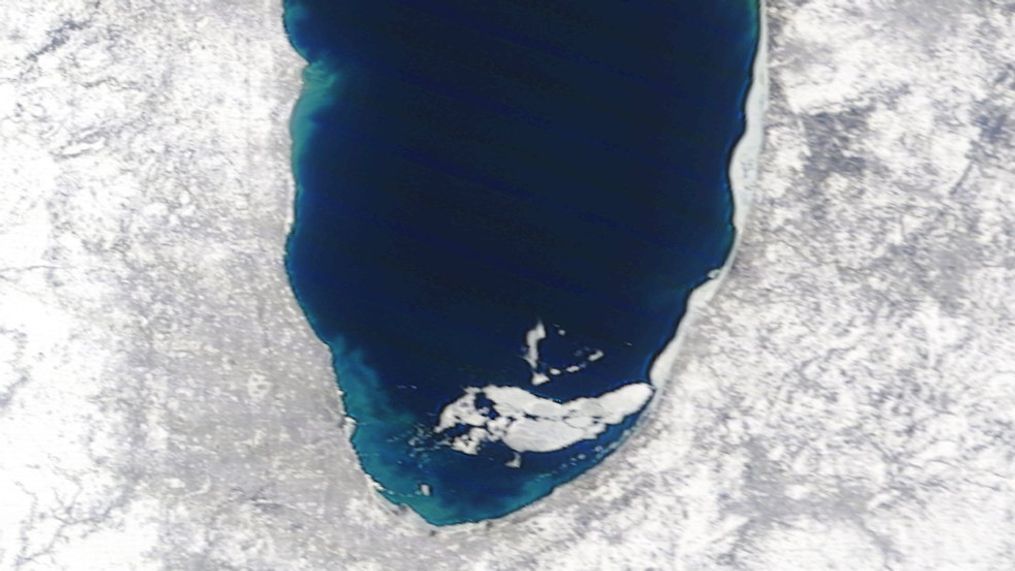Huge sheet of ice drifts across Lake Michigan after breaking away from Chicago

KALAMAZOO, Mich. — It started with a crack. Soon, a large sheet of ice was pulling away from Chicago.
The drifting ice was captured in a time lapse video by WGN-TV's tower camera, mounted on top of the Hancock Center in Chicago. The video shows two separate days with ice breaking away from the shoreline of Lake Michigan.
Wind and current
It's a totally normal occurrence for ice to break apart from the lakeshore, as seen in the Chicago video above. Wind moving offshore along with currents underneath the ice cause it to eventually pull away in one large sheet, or sometimes in a more gradual movement as the second part of the video shows.
On westerly winds, that huge ice sheet from Chicago and the Illinois-Indiana lakeshore drifted out into the open waters of southern Lake Michigan. Visible satellite imagery by Wednesday just before 12 p.m. showed a large portion of the ice had broken apart.
It's a sign that our recent warm up has likely significantly weakened any remaining lake ice in the southern portion of the lake. It's never a good idea to venture onto the ice shelf along the West Michigan lakeshore, but that now becomes even more dangerous.
Declining lake ice
Some years see much more lake ice than others, but since the early 1970s there has been a downward trend in the annual maximum ice coverage on the Great Lakes as a whole. The maximum ice coverage dropped 22% on all of the Great Lakes in the last half century.
There are some years that seem to buck the trend. Back in 2014, a year that brought record cold to much of the upper Midwest, Lake Michigan almost froze over completely, with 93.1% ice coverage during the peak freeze. But the number of years with less than 50% ice coverage on Lake Michigan are outpacing the number of years with a substantial amount of ice over time.
Warmer air and water temperatures are to blame. The climate of West Michigan is warming, and this is especially true in winter. Winter is about 5 degrees warmer on average in Grand Rapids, for example, than it was 50 years ago.
There's also evidence to suggest the window for ice on our lakes in shrinking, with a later freeze and earlier thaw noted at several lakes across the northern United States.
Follow Meteorologist Will Haenni on Facebook,Twitter, and Instagram.
